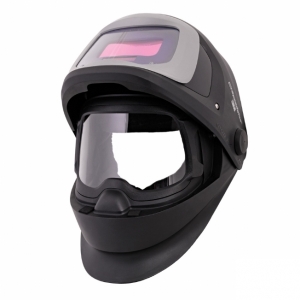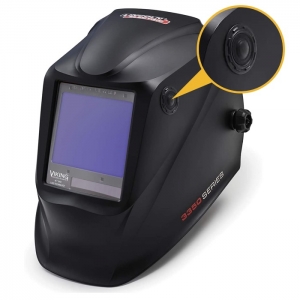How Grind Mode Welding Helmets Work? You’ll be faced with many issues while looking for a welding helmet, which might be confusing, Grind mode is One of them.
Grind mode lowers the shade to a lower value to increase visibility while grinding. The welding operator’s safety and productivity can be improved by using the grind mode, which is triggered by a switch or button.
Grind Mode: What Is It and How Does It Work?
Depending on the helmet, the grind mode can be enabled in a variety of ways. Some models only have a button, while others contain a toggle switch or knob.
The welding operator does not have to remove his or her helmet to activate the grind mode, whether it’s a button, switch, or knob, making it a convenient and safe method.
On some helmets, an external grind control option is offered. The lens adjusts once the welder selects the grind mode, and the grinding operation can begin instantly.
It’s a safe and productive approach to transition into grind mode because the operator never removes his or her helmet to make the adjustment.
Other helmets allow you to raise the auto-darkening glass while leaving the remainder of the shield down. Thanks to the clear grinding shield that stays in place, the operator has a good view of the work area for grinding and adjustments. Under clear grind shield helmets, welders should continue to use their safety glasses.
Also, on a welding helmet that will be used for grinding activities, look for the American National Standards Institute (ANSI Z87.1+) marking. The “+” denotes that the helmet has been tested for severe impact protection.
When Should You Use Grind Mode?
When the grind mode is activated, the helmet is normally shade #3. Although some helmets may include extra shades (#5 to #8) to accommodate plasma arc cutting, the majority will have the lighter shade, signaling that grind mode will be used solely for grinding or setups and not for welding.
When the grinding procedure is over, you turn off the grinding mode without removing the helmet. Even though these helmets work automatically, physically turning off the grind mode guarantees that you are fully protected when you return to welding.
Types Of Grind Mode welding helmets
Flip-Up Mode

Popular welding helmets often include a welding lens and a flip-up grinding visor. For example, the Speedglas 9100 FX flip-up auto darkening welding helmet flips up to reveal a translucent, curved grinding visor, which is ideal for grinding and setups as well as seeing freshly formed welds.
A flip-front helmet is a vital safety feature since it provides the welding operator with continuous impact protection. By not having to flip up the complete welding helmet, welders lessen their risk of damage from high-velocity flying metal generated by others working close.
External Grind Control

Helmets with a fixed front are commonly referred to as “fixed front” helmets. They don’t have the flip-up feature and are designed in a more classic style. They do, however, have an external grind mode welding helmet that enables quick changes from weld mode to grind mode (and back) with the push of a button or switch.
One of the most notable advantages of external grind control is the ability to employ grind mode without the added weight of a grinding visor. Lincoln Electric’s VIKING 3350 is a great example of a high-quality auto-darkening helmet with an external grind control.
Internal Mode
On welding helmets with internal mode, the button is situated within the welding helmet. Internal mode can be frustrating for professional welders who want to maximize productivity by eliminating unnecessary steps in the welding process.
The welder may need to reach under the helmet to press the grind mode button or open the hood to initiate the grind mode. If it doesn’t work, the operator might have to take the helmet off, engage the grind mode, and then put it back on.
Although some internal mode helmets are supposed to be more efficient, most welders prefer a flip-up or external grind control model.
The below video more clarify the use of grinding mode
Pros and cons of Grind Mode
Pros
- In 3 seconds, you can change settings with a flip or a button.
- Ensures that welders are always safe by ensuring
- You don’t have to remove the helmet to change modes.
- When grind mode is activated, some helmets change their shape to alert the operator.
- Grind mode makes use of the most modern technological developments.
Cons
- The grind mode will not work without a battery or solar power.
- The mode buttons have a tendency to jam and break.
- Welders may be exposed to welders flash if you fail to turn off grind mode.
Conclusion
Because both the flip-up and external grind modes of welding helmets have benefits, choosing between the two will largely come down to personal preference depending on the environment you work in and the type of welding you do. The internal mode will almost certainly be overlooked due to its time-consuming nature.
When searching for a welding helmet with a grind mode, seek models that offer the features you need. While the grind mode button or switch provides a clear viewing area to protect your eyes, face, and neck, the welding operator must remain aware of the situation and switch modes as needed.
FAQs

With 8 years of experience a senior welding instructor and safety equipment researcher and writes articles, reviews and guidelines on helmets and other welding and safety gears at Welder Choice, and other written works have been published in various publications.
